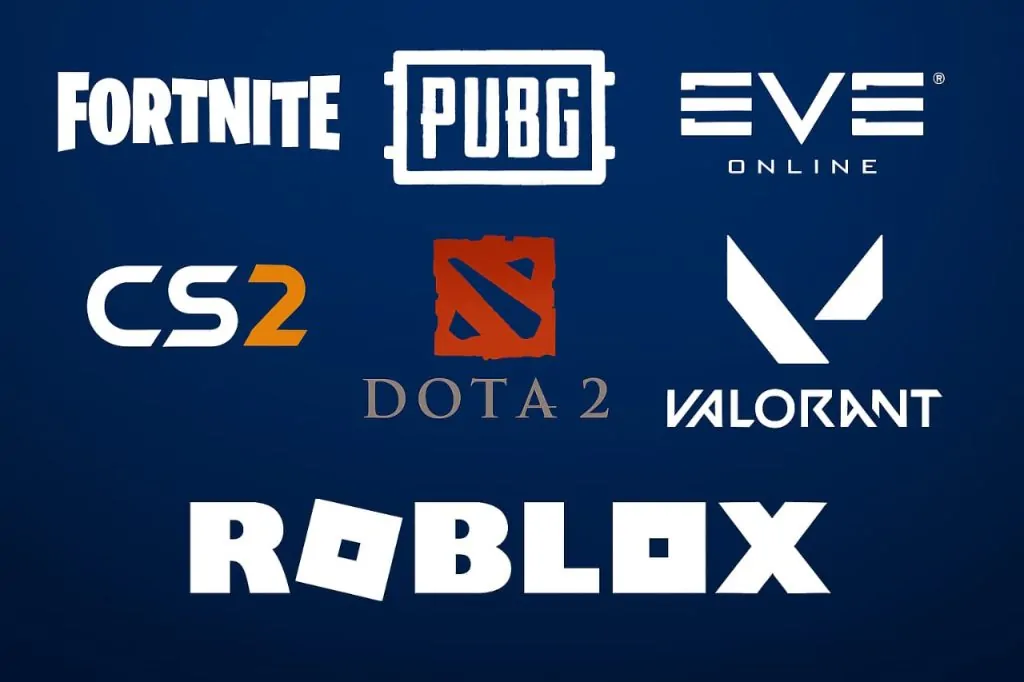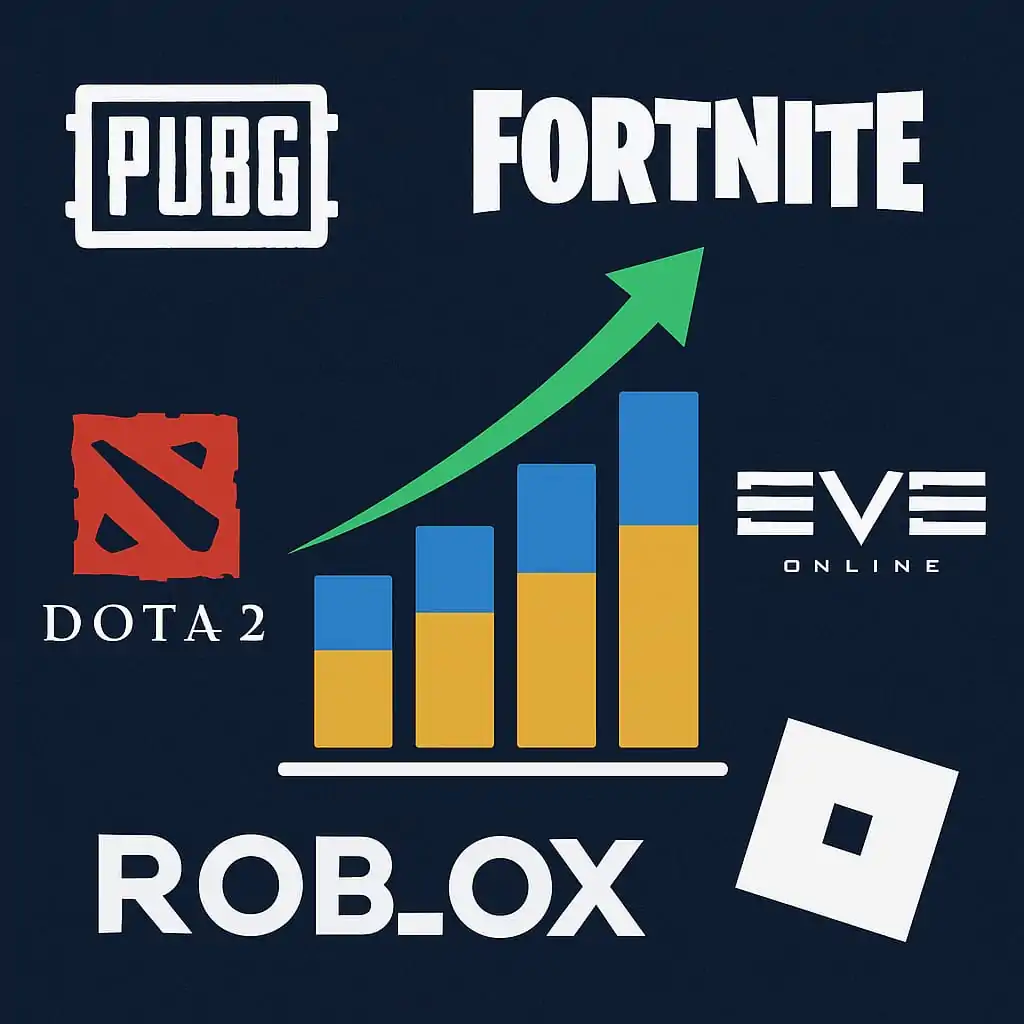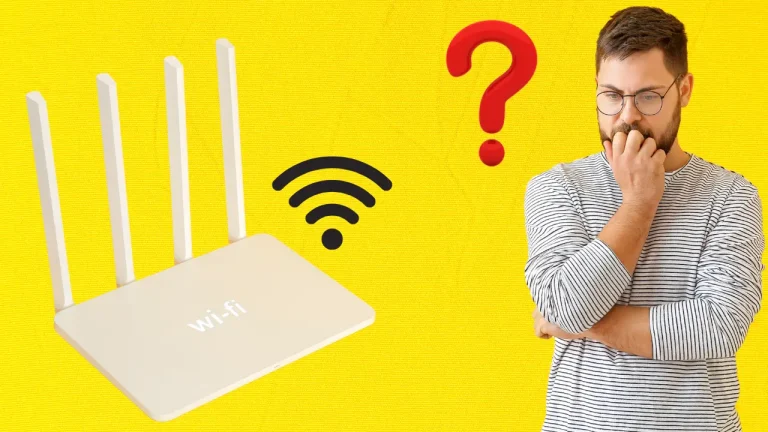The Biggest In-Game Skin Economies [2025]
The world of in-game skins has grown into a massive virtual economy, with digital game skins now worth billions of dollars globally. From rare weapon skins to exclusive character outfits, these virtual items have become highly sought-after assets, fueling some of the biggest skin trading markets ever seen. Gamers and collectors alike are transforming video game cosmetics into lucrative investments, while the rise of skin marketplaces continues to reshape the digital gaming landscape. Understanding how these skin economies work reveals the powerful intersection of gaming, culture, and commerce in today’s digital age.
Explore the biggest in-game skin economies driving billions in digital asset value. Discover how rare game skins, skin trading markets, and virtual cosmetics shape today’s gaming industry and offer new investment opportunities.
What Are In-Game Skins — And Why Do Players Pay Real Money?
In-game skins are aesthetic changes to characters, weapons, or gear—purely visual with no effect on gameplay mechanics. Yet, players pay real cash. Why?
Why Players Love Skins:
Players are drawn to in-game skins because they offer a unique way to express their virtual identity within the gaming world. Beyond just looks, the cosmetic value of skins influences how players are perceived by others, often enhancing their status among peers. Many players view their skins as symbols of social status, especially when those skins are rare or exclusive—functioning much like digital luxury goods.
The appeal grows stronger when popular streamers showcase certain skins, creating viral trends that boost demand and desirability. In fact, skins have evolved beyond mere decoration; they are now seen as valuable digital investments that can rival traditional real-world collectibles in both worth and cultural significance.
What Makes Them Expensive?
The price of in-game skins is largely driven by scarcity, often created through time-limited offers that make certain skins available only for a short period. This limited availability fuels demand and exclusivity. Additionally, skins are assigned different graded rarity levels, which play a crucial role in determining their market value—rarer skins naturally command higher prices.
The cultural significance of a skin, such as connections to special events or popular game moments, can also boost its desirability and price. Lastly, unique visuals and distinctive designs add to a skin’s appeal, making it stand out in the marketplace and further increasing its worth.
Players today view skins as investment-worthy assets, and some even make real income through trading, leveraging skins worth money and rare collectibles in real markets.
How In-Game Skins Turned Into Digital Gold
The rise of skins as currency began when gamers realized that digital items worth money could be bought and sold like stocks. Over time, the virtual skin market growth exploded, with some of the most expensive skin ever sold going for over $100,000.
Key Drivers of Skin-as-Gold Era:
The transformation of game skins into valuable digital assets, often called the Skin-as-Gold era, is fueled by several key drivers. The rise of skin trading platform comparison sites has made it easier for players to find the best deals and trustworthy marketplaces, boosting skin trading activity. Meanwhile, detailed game cosmetics revenue reports across top titles highlight the immense financial impact of skins, drawing more attention from both gamers and investors.
The evolution of game skins as NFTs (Non-Fungible Tokens) has further revolutionized ownership and trading, adding blockchain-backed security and uniqueness. Finally, the growing integration with the metaverse and tokenization is expanding how skins are used and valued, blending gaming with broader digital economies and virtual experiences.
Some gaming economy statistics even show skin-based economies outperforming traditional microtransaction models. From game cosmetics economy to digital cosmetics economy, skins are digital gold.
Meet the Giants: Top 7 Skin Economies in Gaming

1. Counter-Strike 2
- The csgo skin economy pioneered market-based skins
- Skins like Dragon Lore sell for thousands
- Players often trade skins for real money
- Steam Marketplace leads secure game skin trading
2. EVE Online
- An actual player-built economy
- Skins are tokenized game assets
- Reflects the future of digital cosmetics
3. Fortnite
- Led by fortnite cosmetic market
- Exclusive collaborations with Marvel, Nike, and more
- Influencer impact on skins is enormous
- Example of esports skins hype done right
4. Dota 2
- Features community-designed skins
- Dota 2 skin trading generates millions
- Supports top cosmetic marketplaces ranked
5. Valorant
- Riot’s unique approach fuels valorant skin prices
- Profitable game cosmetics with battle pass exclusives
6. PUBG
- Skins in PUBG reflect military realism
- PUBG skins value boosted by limited releases
- One of the best games to flip skins
7. Roblox
- Skins designed by users
- User-generated skins are monetized
- Rise of teenage game entrepreneurs
What Makes a Skin Valuable? The Biggest In-Game Skin Economies
The value of an in-game skin depends on a combination of factors such as rarity, market demand, aesthetics, and the surrounding external hype. Among these, rarity plays the most significant role, as limited availability naturally drives up a skin’s worth. The way skin drops are managed in each game controls supply and scarcity, influencing prices accordingly. It’s important to note that skin rarity and value vary from game to game, depending on their unique economies and player bases.
Additionally, community perception heavily impacts which skins are desirable, while influencer hype and endorsements can significantly increase demand and price. A thriving large skin collector community further fuels the resale market, often driving prices higher. The psychology behind collecting these cosmetic items is similar to that of luxury fashion, where exclusivity and personal expression matter greatly. Moreover, the growing esports cosmetics market adds long-term value by linking skins to competitive prestige and memorable gaming moments.
Where Are Skins Traded? Inside the Real Skin Marketplaces
There are several legit marketplaces, each offering unique features:
Top Marketplaces:
When it comes to buying or selling in-game skins, picking the right marketplace can make all the difference between a smooth trade and a costly mistake. The Steam Marketplace is the go-to hub for millions, especially for games like CS2, known for its rock-solid security and trusted environment. But if you’re hunting for better deals or rare finds, platforms like SkinBaron and Skinport are quickly rising as the top contenders for safe and reliable skin trading.
To keep your trades hassle-free, always stick to trusted sites, learn exactly how skin trading works, and avoid falling prey to scams by following smart tips—like checking seller ratings and using scam-free trading platforms. Don’t forget to lock down your Steam inventory with strong security settings; after all, protecting your digital collection is just as important as growing it.
These platforms are the backbone of the secure game skin trading economy.
The Future of Skin Economies: What’s Next?
Major Trends:
The future of skin economies is set to revolutionize gaming like never before. NFT gaming skins are rapidly becoming the new standard, allowing players true ownership of their digital assets through blockchain technology. This shift enables full control and secure trading beyond traditional platforms. Meanwhile, AI-generated game skins promise virtually endless uniqueness, giving players one-of-a-kind cosmetic items tailored to their tastes. Personalized skins are also gaining popularity, making customization more immersive than ever.
On the regulatory front, governments worldwide are beginning to explore regulations on skin trading to protect players and markets. Additionally, tokenized digital assets are poised to hit crypto exchanges, merging gaming with the booming world of cryptocurrency. As these trends grow, gaming skins as investment assets will likely attract serious attention from institutional investors, cementing their place as valuable components of the digital economy.
Will skins become NFTs across all platforms? Possibly. The next few years will define that future.
Market Stats: How Big Is the Skin Economy in 2025?

The game skin economy is booming in 2025, showing steady double-digit growth that continues to reshape the gaming landscape. Recent gaming economy statistics reveal that the market has surpassed a staggering $50 billion, with digital asset marketplace data confirming that player spending on skins is on the rise. Forecasts predict that skin trading revenue will exceed $75 billion this year, driven by nearly 30% year-on-year growth. When comparing individual games, titles like CS2 and Fortnite dominate the market, particularly within the esports-centric skin marketplaces.
Analyzing skin trading data for 2025 uncovers emerging trends that point toward a long-term sustainable virtual economy. For those interested in investment opportunities, consulting the latest digital item trading reports provides valuable insights into this rapidly expanding market.
What Experts Are Saying: Game Devs, Economists, and Traders
Experts agree that in-game skins have firmly established themselves as a lasting part of the gaming ecosystem. While many celebrate the booming market, some raise important questions about the legal status of skin trading and the need for clearer regulations. Esports influencers and their use of skins are actively reshaping market dynamics, boosting demand and cultural relevance.
Game developers share mixed opinions on monetization, balancing profit with player satisfaction, while ethical debates continue over fairness and transparency in skin economies. Economists and gamers often differ in their views, with economists focusing on market impacts and gamers on the community experience. Critics highlight concerns about gaming monetization fairness, yet many developers hint at a future of regulated cosmetic trading to protect players. Underlying it all is the powerful psychology of cosmetic purchases, which continues to drive monetization and player engagement.
Final Thoughts: Are Skins the Future of Gaming Economies?
Without a doubt, skins are shaping the future of gaming economies. The question isn’t if, but how far this trend will go—because all signs point to a resounding yes. For many players and investors, putting money into skins is already proving to be a smart move. The way skins have transformed gaming culture is undeniable, offering personalization and profit without directly affecting gameplay, yet influencing player behavior and engagement deeply.
If buying skins adds value to your experience, it’s a choice worth considering. The broader gaming industry stands to gain enormously from this shift, as cosmetic monetization reshapes traditional revenue models. The future outlook for the skin economy is strong, with virtual assets becoming a real, valuable part of digital life—not just a theoretical concept. In essence, skins aren’t just cosmetic—they’re a powerful force driving the next era of gaming.
FAQs
Q1: What are in-game skins and how do they work?
In-game skins are cosmetic items that change the appearance of characters, weapons, or equipment without affecting gameplay. They are often earned, purchased, or traded within game marketplaces.
Q2: How can I buy and sell game skins safely?
Use trusted platforms like Steam Marketplace, Skinport, or official game stores. Always verify seller ratings and avoid third-party sites with poor reviews to prevent scams.
Q3: Which games have the most valuable skins?
Popular games with high-value skins include Counter-Strike, Fortnite, Dota 2, Valorant, and PUBG, where rare skins can sell for thousands of dollars.
Q4: Can you make money from trading in-game skins?
Yes, many players profit by buying rare skins at low prices and selling them later as their value increases, leveraging established skin trading markets.
Q5: Are in-game skins considered real property?
While skins hold real-world value, legal ownership varies by game and jurisdiction. They are generally treated as digital assets within the gaming ecosystem.
Q6: What factors influence the value of a game skin?
Rarity, demand, exclusivity, visual appeal, and player popularity all contribute to a skin’s market value.
Q7: Is it safe to invest in gaming skins?
Investing in skins carries risks like market volatility and scams. Always use reputable platforms and stay informed about market trends.
Conclusion:
The rise of in-game skin economies has transformed virtual cosmetics into powerful digital assets that drive billions in value worldwide. As the gaming industry continues to evolve, skins offer more than just visual appeal—they represent real opportunities for players, collectors, and investors alike. Staying informed about skin market trends and trusted trading platforms is key to unlocking the full potential of this booming digital marketplace.

![Cyber Background Checks: Unveiling Digital Truths for Safety [2025]](https://techsroid.com/wp-content/webp-express/webp-images/uploads/2025/05/ChatGPT-Image-May-28-2025-11_10_40-PM-768x768.jpg.webp)

![Snapchat Planets: How Does Friend Solar System Work? [2025]](https://techsroid.com/wp-content/webp-express/webp-images/uploads/2025/05/Untitled-design-5-768x432.jpg.webp)